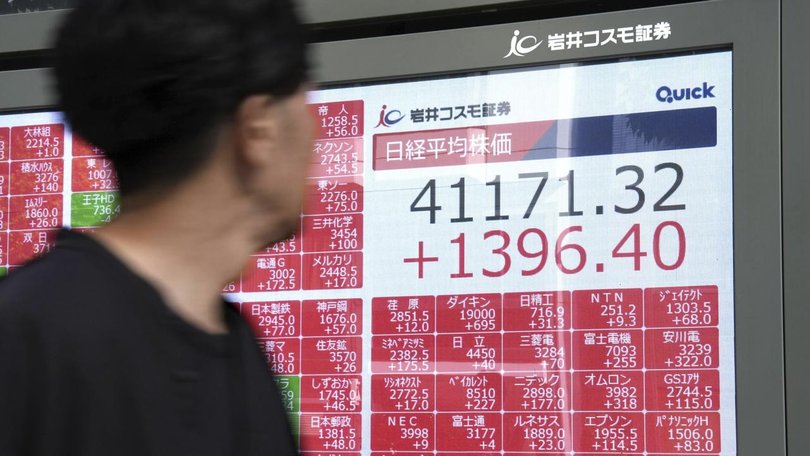Trumps trade tariffs hit Asia hard as investors brace for key US employment report

Asian shares fell on Friday after the US slapped dozens of trading partners with steep tariffs, while investors anxiously await US jobs data that could make or break the case for a Fed rate cut next month.
Late on Thursday, President Donald Trump signed an executive order imposing tariffs ranging from 10 per cent to 41 per cent on US imports from dozens of countries and foreign locations.
Rates were set at 25 per cent for India’s US-bound exports, 20 per cent for Taiwan’s, 19 per cent for Thailand’s and 15 per cent for South Korea’s.
Sign up to The Nightly's newsletters.
Get the first look at the digital newspaper, curated daily stories and breaking headlines delivered to your inbox.
By continuing you agree to our Terms and Privacy Policy.He also increased duties on Canadian goods to 35 per cent from 25 per cent for all products not covered by the US-Mexico-Canada trade agreement, but gave Mexico a 90-day reprieve from higher tariffs to negotiate a broader trade deal.
“At this point, the reaction in markets has been modest, and I think part of the reason for that is the recent trade deals with the EU, Japan, and South Korea have certainly helped to cushion the impact,” said Tony Sycamore, analyst at IG.
“After being obviously caught on the wrong foot in April, the market now, I think, has probably taken the view that these trade tariff levels can be renegotiated, can be walked lower over the course of time.”
MSCI’s broadest index of Asia-Pacific shares outside Japan fell 0.4 per cent, bringing the total loss this week to 1.5 per cent. South Korea’s KOSPI tumbled 1.6 per cent while Japan’s Nikkei dropped 0.6 per cent.
EUROSTOXX 50 futures dropped 0.5 per cent. Nasdaq futures fell 0.5 per cent while S&P 500 futures slipped 0.3 per cent after earnings from Amazon failed to live up to lofty expectations, sending its shares tumbling 6.6 per cent after hours.
Apple, meanwhile, forecast revenue well above Wall Street’s estimates, following strong June-quarter results supported by customers buying iPhones early to avoid tariffs. Its shares were up 2.4 per cent after hours.
Overnight, Wall Street failed to hold onto an earlier rally. Data showed inflation picked up in June, with new tariffs pushing prices higher and stoking expectations that price pressures could intensify, while weekly initial jobless claims signalled the labour market remained on a stable footing.
Fed funds futures imply just a 39 per cent chance of a rate cut in September, compared with 65 per cent before the Federal Reserve held rates steady on Wednesday, according to the CME’s FedWatch.
Much now will depend on the US jobs data due later in the day, and any upside surprise could lower the chance for a cut next month. Forecasts are centred on a rise of 110,000 in July, while the jobless rateis likely to tick up to 4.2 per cent from 4.1 per cent.
The greenback has found support from fading prospects of imminent US rate cuts, with the dollar index up 2.4 per cent this week against its peers to 100, the highest level in two months. That is its biggest weekly rise since late 2022.
The Canadian dollar was little impacted by the tariff news, having already fallen about 1.0 per cent this week to a 10-week low.
The yen was the biggest loser overnight, with the dollar up 0.8 per cent to 150.7 yen, the highest since late March. The Bank of Japan held interest rates steady on Thursday and revised up its near-term inflation expectation but Governor Kazuo Ueda sounded a little dovish.
Treasuries were largely steady on Friday. Benchmark 10-year US Treasury yields ticked up one basis point to 4.374 per cent, after slipping two bps overnight.
In commodity markets, oil prices were steady after falling 1.0 per cent overnight. US crude rose 0.1 per cent to $US69.36 ($A107.89) per barrel, while Brent was at $US71.84 ($A111.75) per barrel, up 0.2 per cent.
Spot gold prices were steady at $US3,288 ($A5,115) an ounce.
